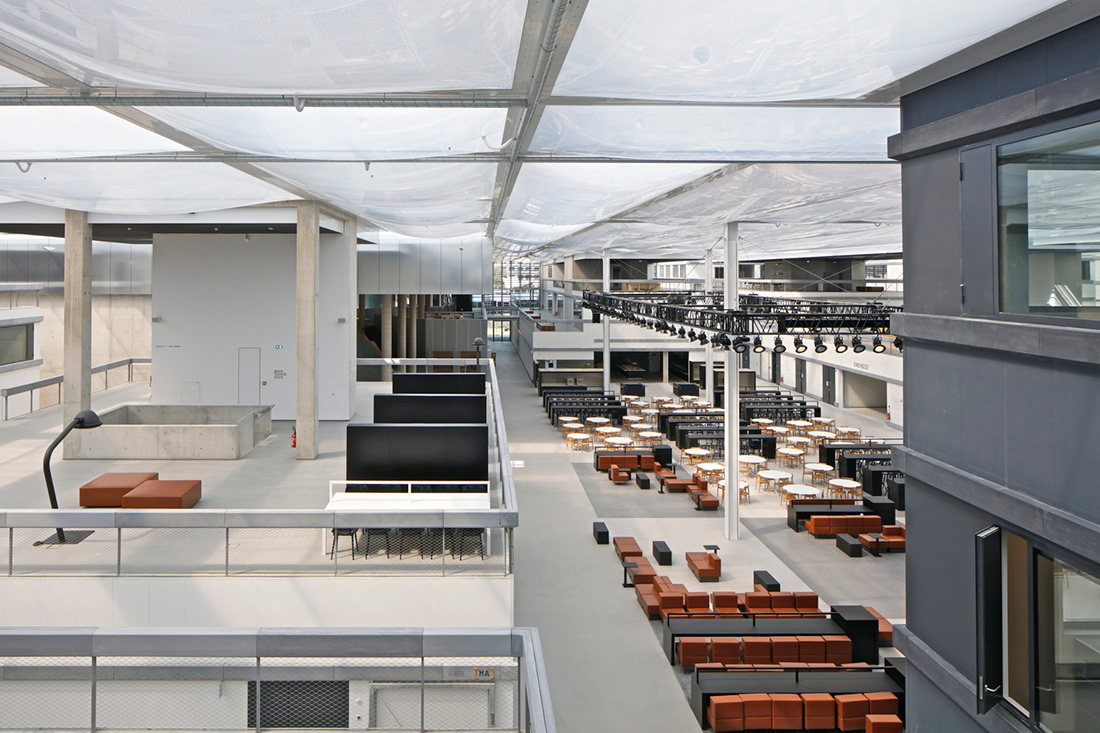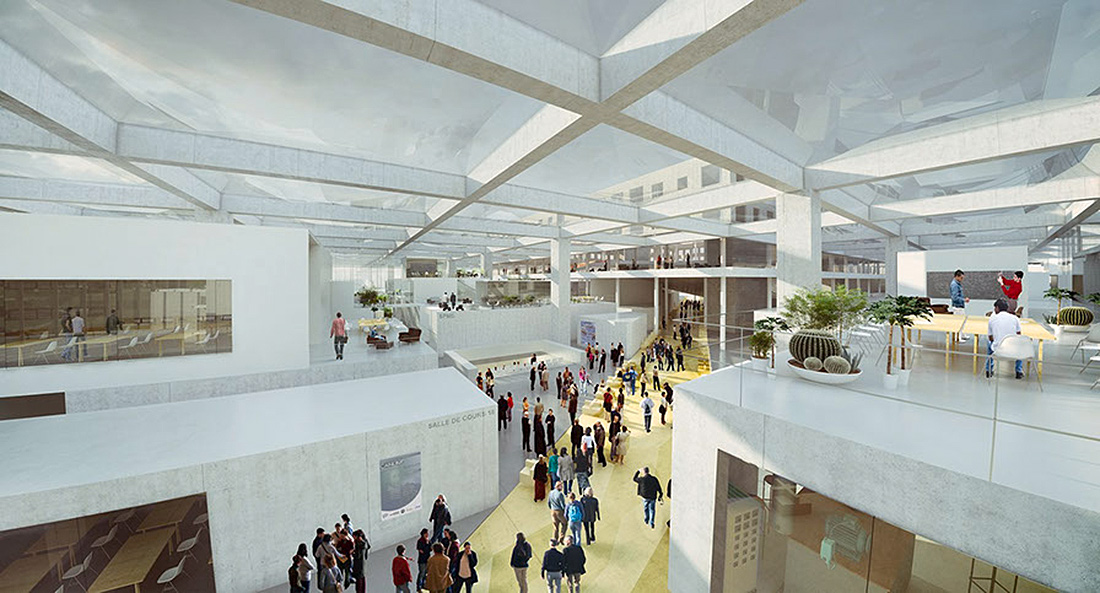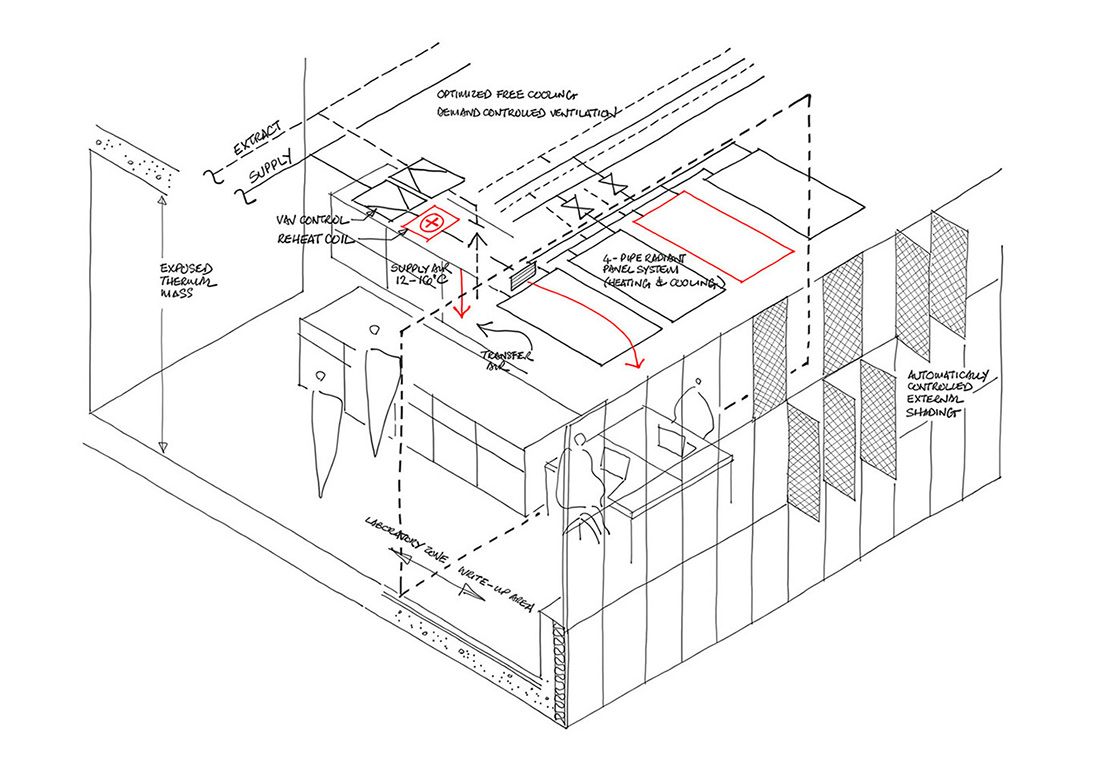Prof. Brian Cody;
Energy Design Cody; Austria; www.energydesign-cody.com
Brian Cody is university professor at Graz University of Technology and head of the Institute of Buildings and Energy since 2004. His focus in research, teaching and practice is on maximizing the energy performance of buildings and cities. Before his appointment in Graz, he was associate director of the international engineering consultancy Arup. He is founder and CEO of the consulting firm Energy Design Cody, which is responsible for the development of innovative energy and climate control concepts on construction projects all over the world. Professor Cody serves as member on many advisory boards and juries and is Visiting Professor at the University for Applied Arts in Vienna. He is author of the book “Form follows Energy” published in 2017.

LAB CITY CENTRALESUPÉLEC – ENGINEERING SCHOOL, ECOLE CENTRALE PARIS
Their involvement on this project started during the competition phase. They worked with OMA architects in Rotterdam to help them develop a new university campus building typology which achieves high energy performance by utilizing synergetic interactions between the various uses while creating a new form of campus space under a “climate envelope”. The building comprises teaching spaces, laboratories and offices, all enclosed within a climate envelope so that the in-between spaces form an indoor campus. Within the hall under the climate envelope, composed of a PTFE foil roof and glass façades, a macroclimate is created, largely by passive means, which is not as closely controlled as the internal environments within the laboratories and the offices. The roof design reacts to the requirements of the various spaces below by combining highly insulated opaque areas with transparent areas and optimizing their placement and distribution to reflect the distribution of the building program in the hall. The hall is a transitional space between the internal and external environments, supporting and enhancing the campus atmosphere and informal communication. The concepts developed work in the completed building to enhance both communication between people and synergetic energy flows between the many diversified uses under its roof, transferring surplus heat from the laboratories to spaces which require heat such as the offices.

DATA:
Location: Paris, France
Architect: OMA Office for Metropolitan Architecture
Building owner: Ecole Centrale Paris
Total floor area: 50 000 m2
Start date: 2012
Completion date: 2017
Service: Energy design concepts
Status: Completed
Rendering: OMA
Photos: Philippe Ruault
Renderings: OMA Office for Metropolitan Architecture

MED CAMPUS GRAZ
The exploitation of symbiotic relationships and synergies in the development of the energy systems is an important aspect of the concepts we developed for the new campus of the medical University of Graz, in collaboration with the architects Riegler Riewe. Deceptively simple strategies can save considerable amounts of energy and resources. In the laboratory areas, a system was developed which employs the supply of cooled air and the use of reheaters to meet the individual demands of the laboratory spaces instead of the conventional HVAC system type utilized in Central Europe with isothermal supply air and secondary cooling systems, ensuring a greater utilization of free cooling and thus saving thermal energy and increasing energy performance. The floor plan is so configured that the office spaces and write- up areas are positioned in the regions with the best daylight conditions. The daylight openings in the façades in the lab areas are provided at two levels, at mid-level to provide views at the write-up areas and at high level to provide daylight to the laboratories behind. The configuration and size of the openings in the façades depends on the specific location within the dense urban structure and the use of the spaces behind the façade. The offices are naturally ventilated and heated and cooled via suspended radiant ceiling panels. On account of wind considerations related to microclimate the buildings are orientated with the long axis running north-south. The external shading devices were therefore designed as automatically controlled vertically aligned perforated metal elements which allow daylight and views while blocking solar radiation.


DATA:
Location: Graz, Austria
Architect: Riegler Riewe Architects
Building owner: BIG Bundesimmobiliengesellschaft m.b.H.
Total floor area: 90 000 m2
Start date: 2010
Completion date: 2017
Service: Energy design concepts
Status: Completed



